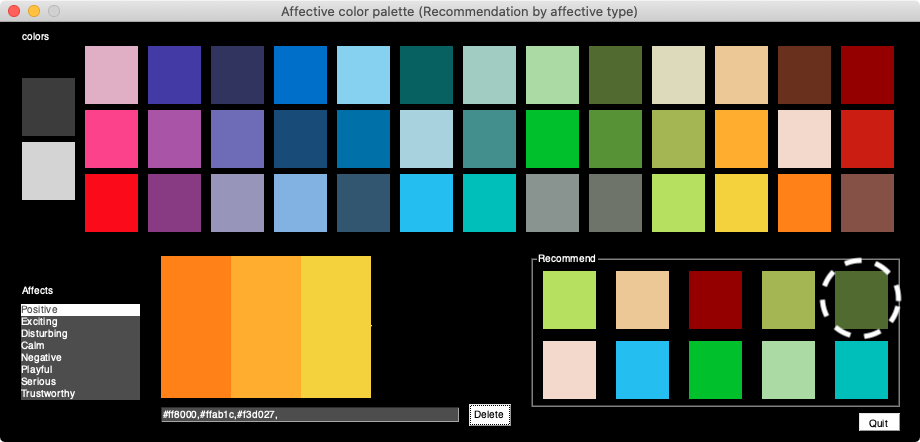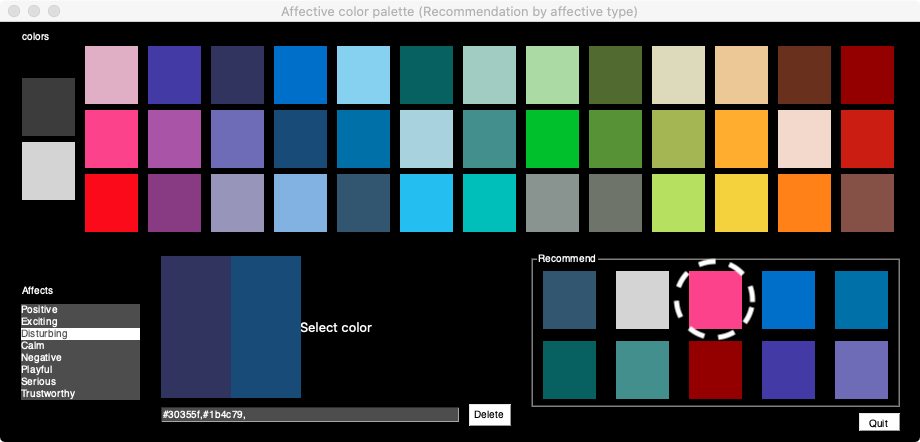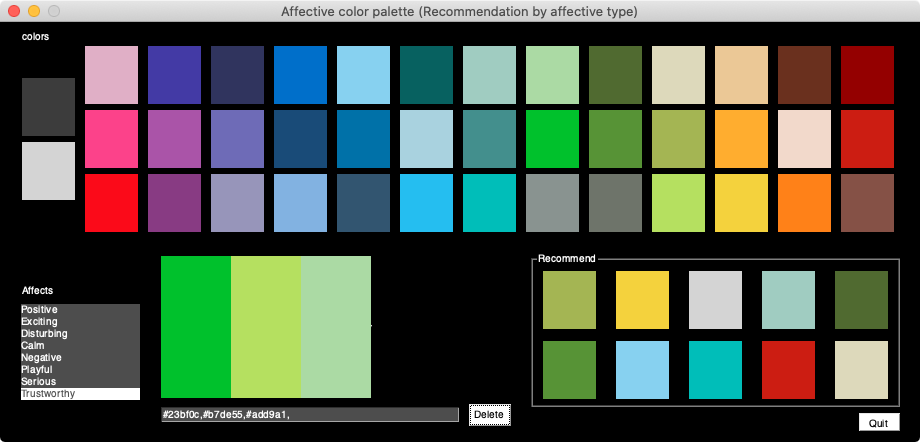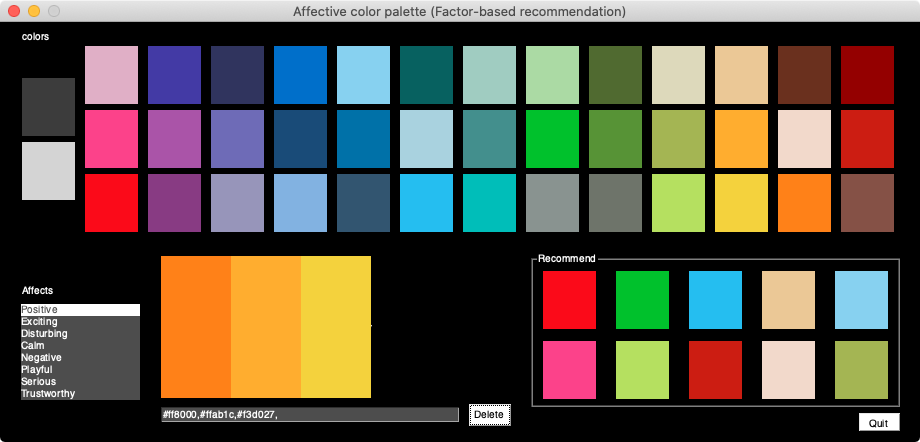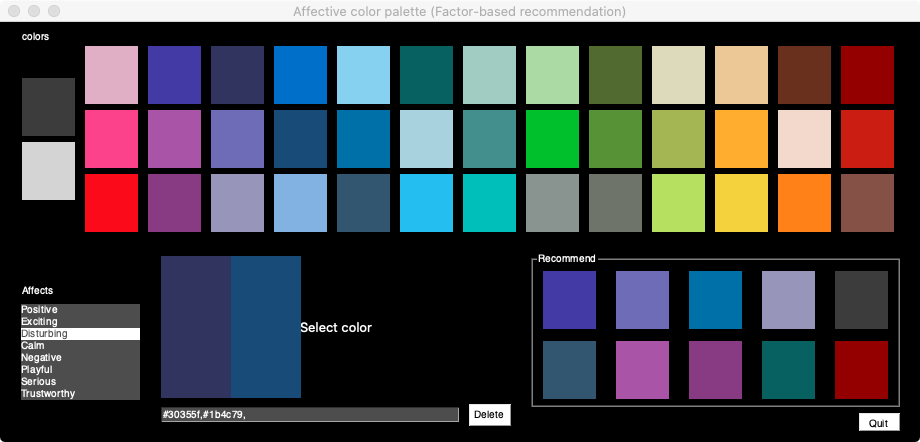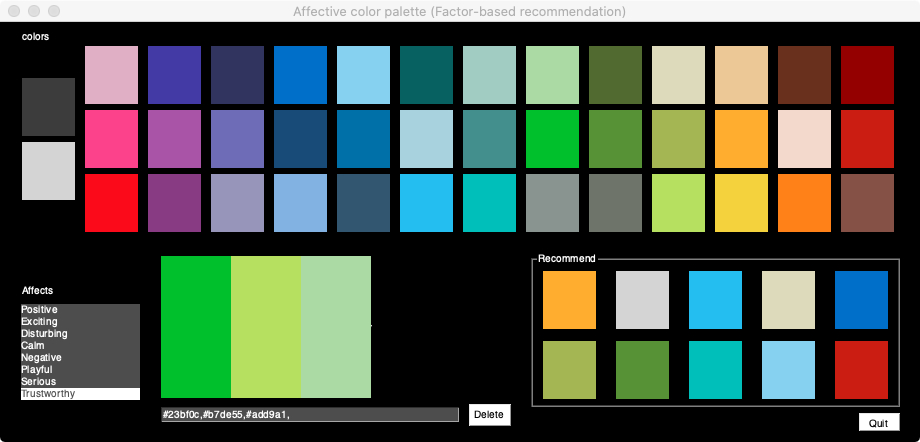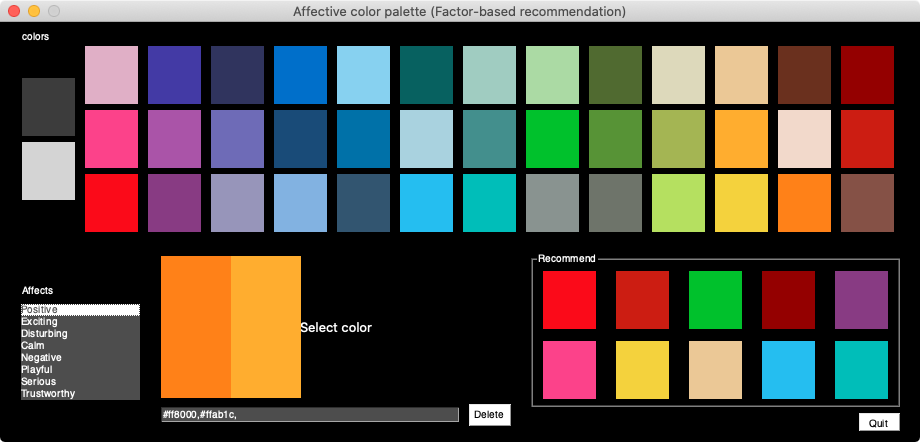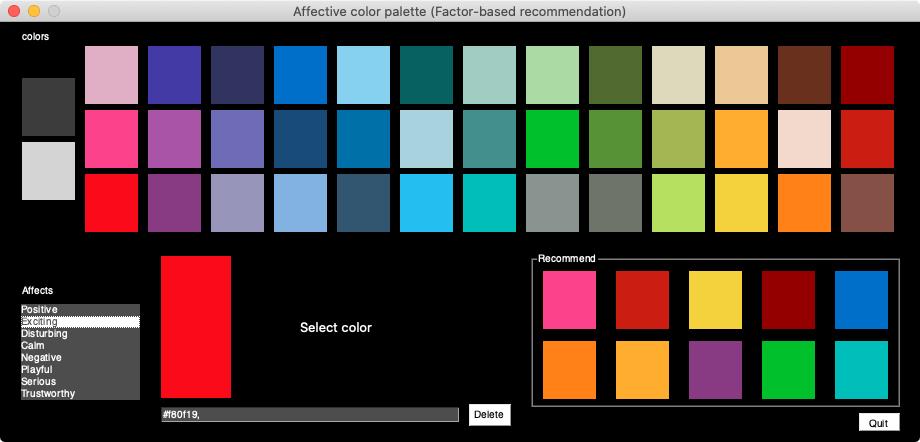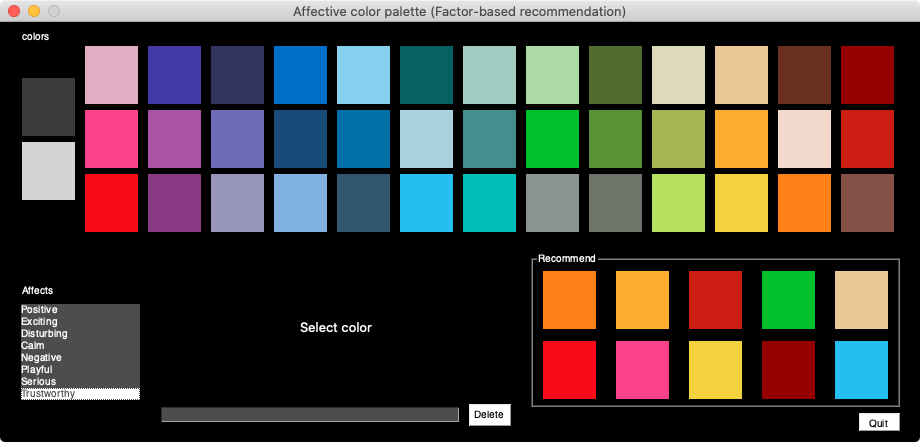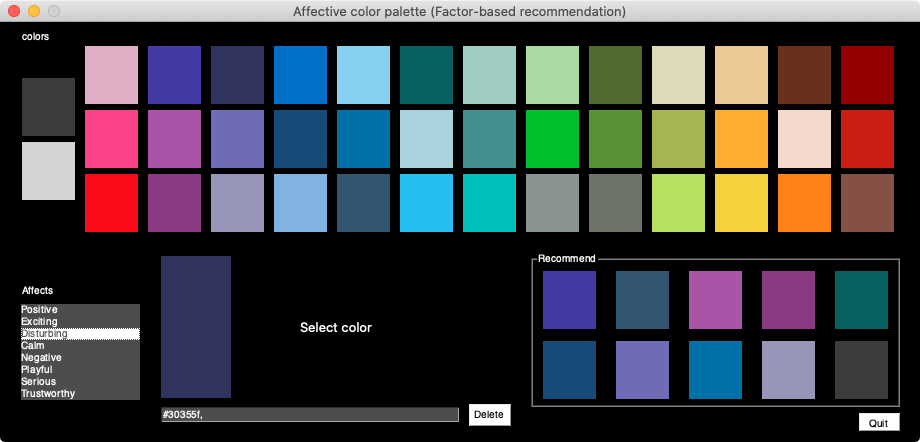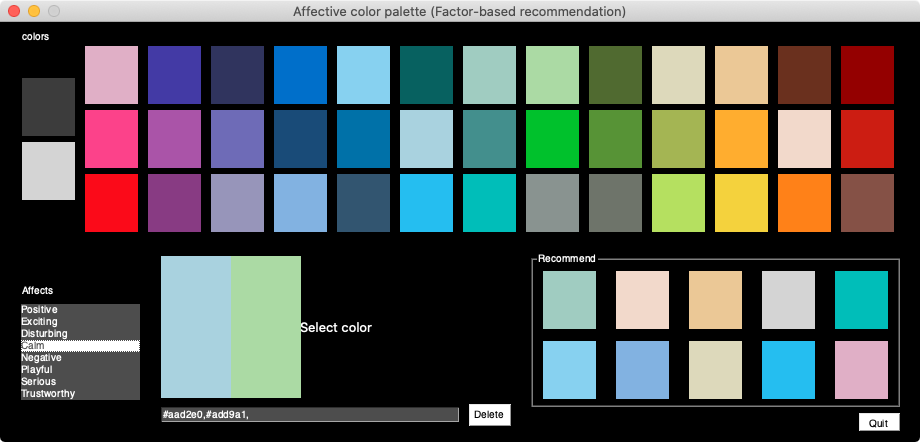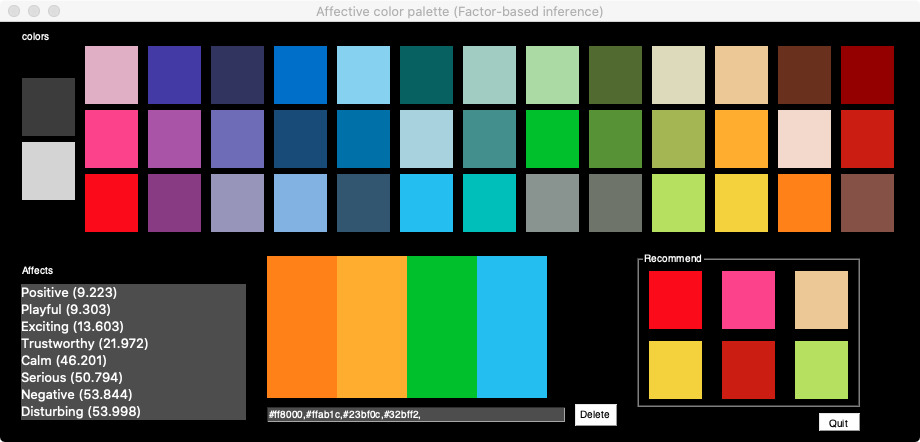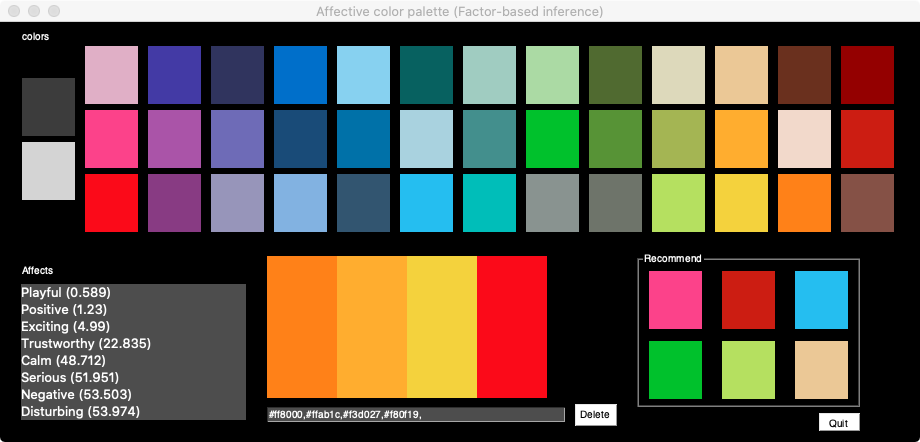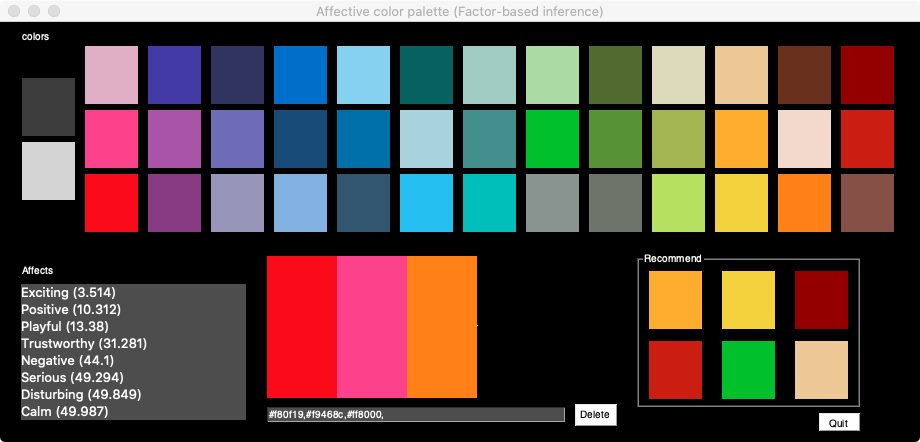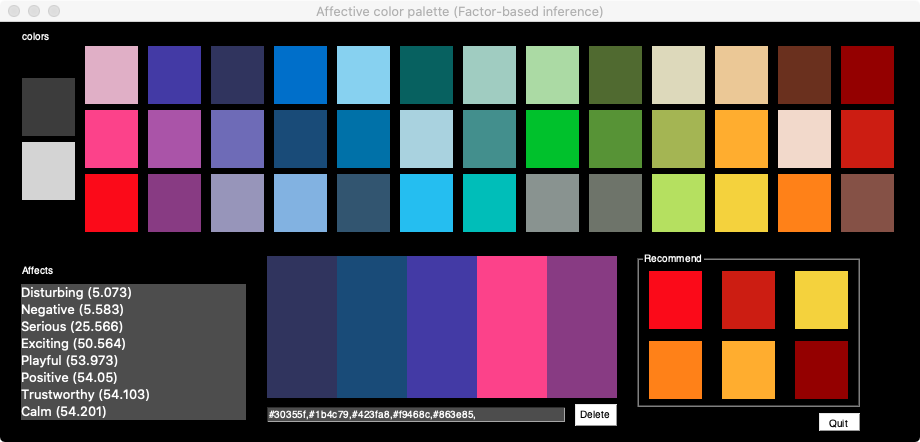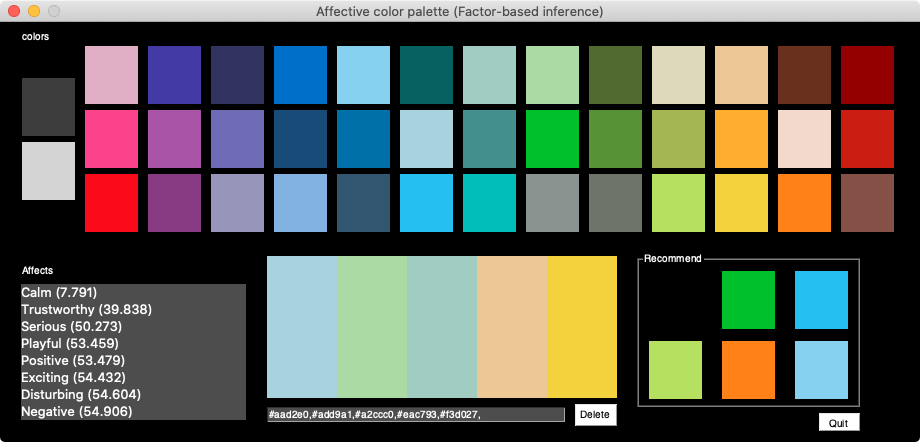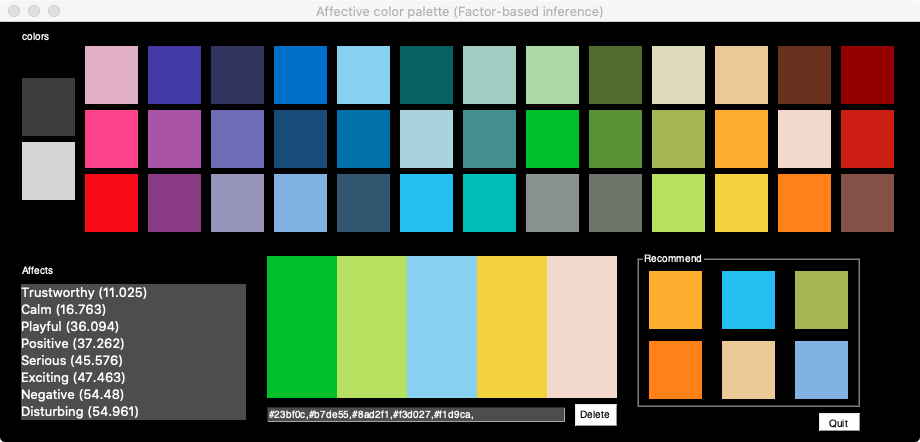|
This web page is prepared for providing research materials of our project on affective color palette recommendations.
|
Introducing affective categories into the color recommendation |
|
Color is an important factor that affects human perception, and choosing the right colour set is crucial for creating informative and attractive visual content.
Furthermore, the choice of such colour palettes often reflects the emotional intentions of the creator, especially when a particular emotional style is being introduced.
In this study, we have attempted to realise a colour palette recommendation system that promotes the preferred colours and emotional expression in visual content.
|
Idea |
|
The recommendation system is based on data from the item selections made by multiple users in the past.
Taking color selection as an example, as shown on the left of Figure 1, the colors chosen by users are expressed using a matrix.
By approximating this matrix by factorizing it as the product of two feature matrices, the color selection trends of all users are expressed using a small number of factor vectors.
We use a nonnegative matrix factorization, which makes it easier to understand the implications of the decomposed matrix in which all matrix elements are non-negative.
However, the matrix representation above only allows us to obtain trends between users and colors. Therefore, we introduced a tensor representation, a three-dimensional matrix shown on the right of Figure 1, by incorporating a one-dimensional emotional expression into the matrix representation. By leveraging the non-negative factorization of this tensor, we were able to extract meaningful trends that relate to both users' color choices and emotional expressions. This enabled us to construct a practical and effective color recommendation system. |

|
|
Figure 1:
Matrix representation (left) of color selection by multiple users.
Tensor representation (right) of color selection based on various users and affective expressions.
|
Results |
|
In this study, we conducted experiments on the following three cases:
Figure 2 shows a comparison between Case I and Case II, and demonstrates that the proposed method based on tensor factorization provides better color recommendations. |
|
Figure 3 shows how the color choices of other affective categories influence the results in Case II.
In Trustworthy, there is a mixture of warm and cool color preferences. Still, the colors chosen by other affective categories impact the color recommendations, which are now different for warm and cool colors.
|
|
Figure 4 shows an example of Case III, where colors are recommended while guessing the emotion that best matches the selected color.
In this way, it is possible to automatically guess the emotion from the colors given as an example and recommend a set of colors that match it.
|
Paper & VideoIkuya Morita, Shigeo Takahashi, Satoshi Nishimura and Kazuo Misue, Affective Color Palette Recommendations with Non-negative Tensor Factorization in Proceedings of the 26th International Conference Information Visualisation (IV2022), pp. 40-47, 2022 doi: 10.1109/IV56949.2022.00016 |
